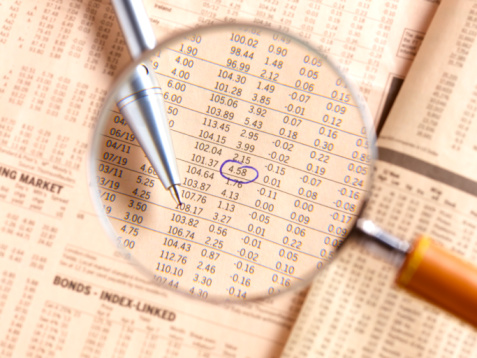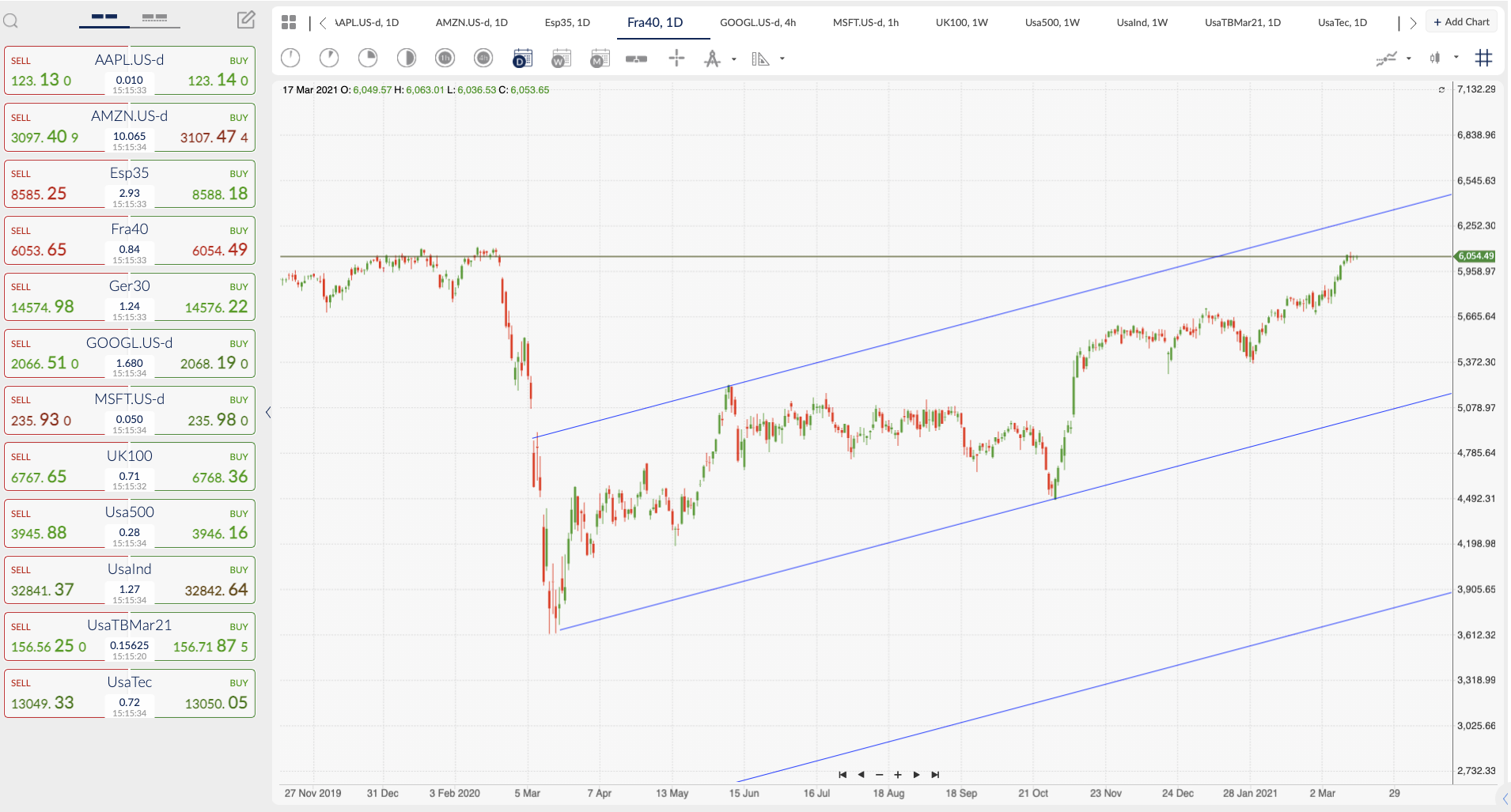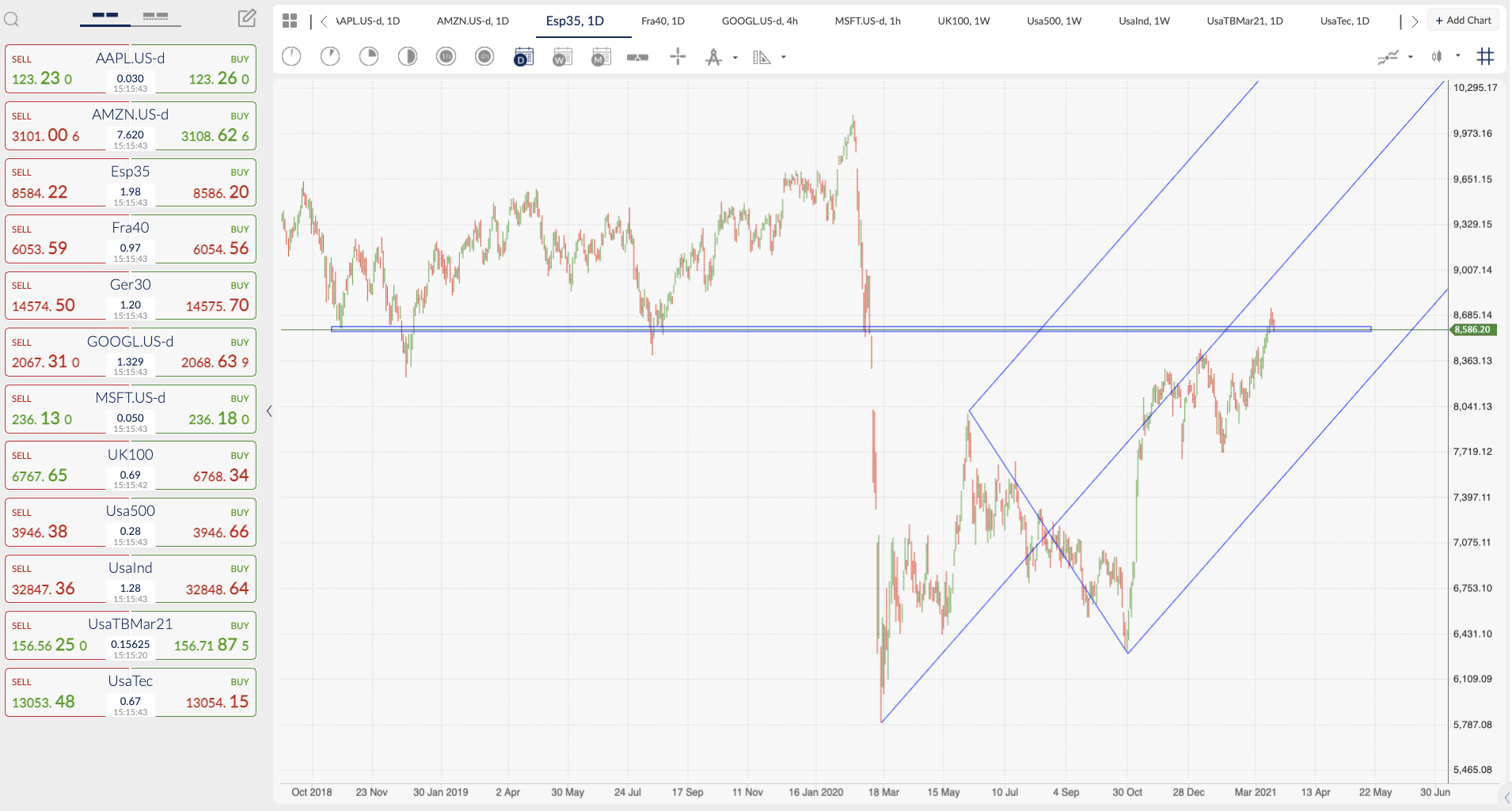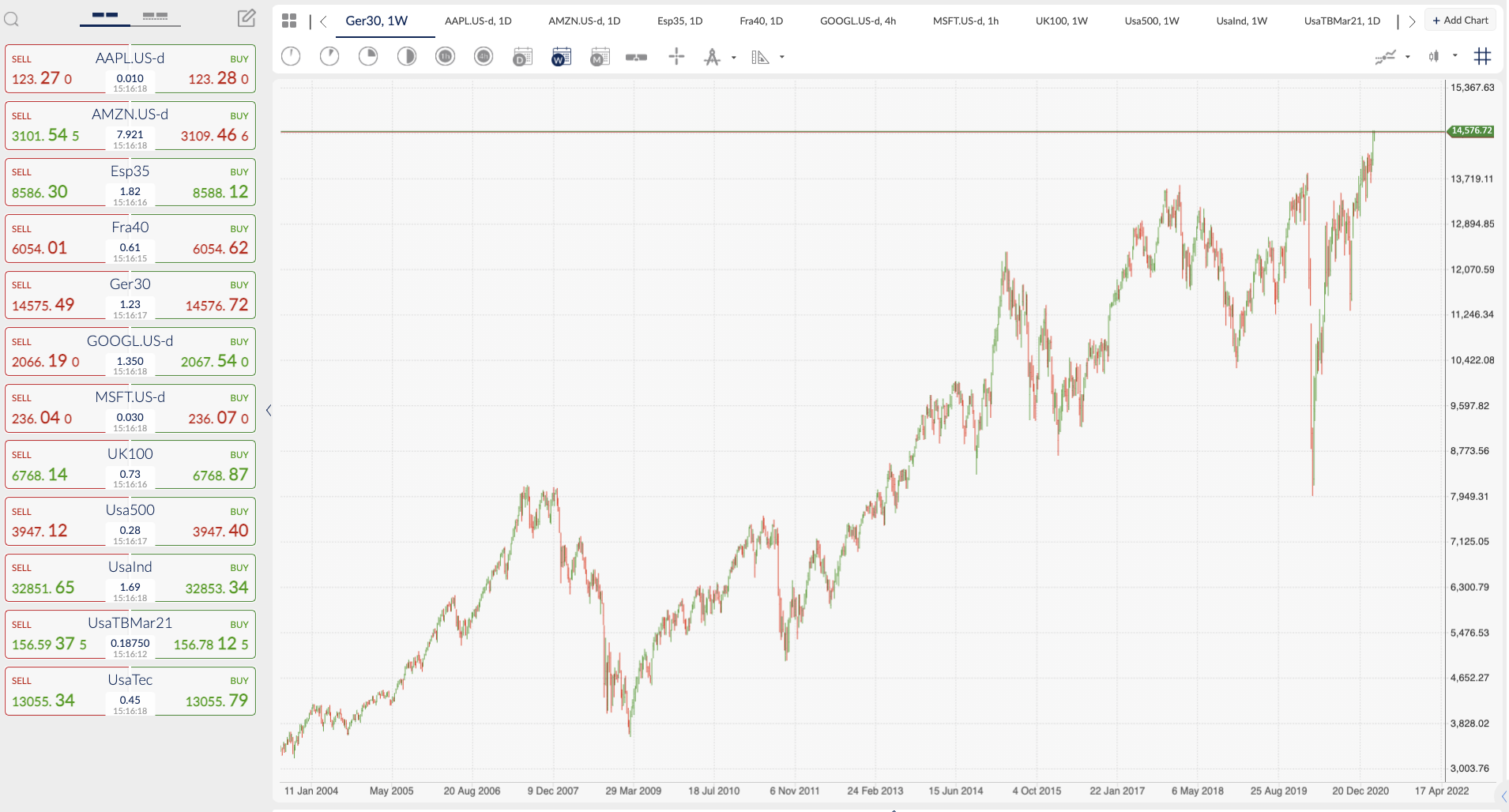All eyes and ears will be directed to the FOMC today to see if the US federal monetary committee keeps to the themes that have dominated the last year, or whether the recent spike in US treasury yields is enough to spook them into mentioning, let alone acting on a rate hike, even at a tiny 5bps.
The general consensus is that nothing changes, and we go into the next quarter expecting inflationary pressures to be transitory and that the Fed won’t change course until they see ‘full employment’. Currently, the US labour force participation rate is down around 65%, levels last seen in the mid-1970s, adding to the consensus that the Fed keeps monetary policy as is.
We have fiscal stimulus from the sovereign nations following the US Treasuries’ lead. With the stimulus cheques going directly to citizens’ bank accounts. In the USA, the Biden administration is seeking to do a deal for infrastructure next, having secured and signed off on the $1.9trn COVID-19 relief package last week. A lot of these trillions of US dollar, yen, and pounds are finding their way into the stock markets or maybe the global speculators and investors are sufficiently assured that the governments and the treasury departments will provide a sufficient backstop.
So, when we look at the global indices across the board, we see a full recovery of the 2020 price action and the manifested much-touted V-shape recovery. In fact, you have to zoom out 3 years to get a better picture of where global indices really are.
See real-time quotes provided by our partner.
See real-time quotes provided by our partner.
See real-time quotes provided by our partner.
From April 2018 to the present day the majority of the world indices are positive, with only the IBEX35, FTSE100 and Hang Seng below the 0% growth watermark. At the opposite end of the spectrum, the Nasdaq100 is the clear winner at up 80% in comparison, of which most of the gains really happened in the last 365 days.
The FTSE and Hang Seng have both suffered under political uncertainty. With the UK in limbo for several years whilst we awaited the outcome of Brexit. For the Hang Seng, the political unrest that saw citizens demonstrating on the streets pre-covid has also signalled a flight from their index.
So today if we look at the biggest gainers of the pandemic flows our attention is focused on the Nasdaq, the Korean KOSPI, and the Nikkei 225, all up 95.6%, 76.8% and 75.8% respectively.
The Nasdaq has drifted down to the 13000 level ahead of the FOMC data release today and looks likely to hold around there from the start of the US session. However, it has been showing more signs of the volatility of late and for some retail traders, their eye is on a possible head and shoulders pattern. The price action from mid-January 2021 through to the present day has seen new all-time highs print forming the peak of the head in the H&S pattern, with the neckline spanning between the January and February 2021 lows. If this bearish reversal pattern were to play out the targets below are 11500 to 10200, depending on whether the measured move is 1 or 2 times the distance from the head to the neckline.
However, this could be a retail trader bear trap and we should look to reasons why the Nasdaq has not performed as well of late compared to say the Dow Jones Industrial Average or the S&P500.
The mega-bull run-up for the Nasdaq was based on the change in habits of the population who had to rely heavily on the technology companies that make up the composite index. The likes of Microsoft, Google, and Zoom competed for dominance over the software we all use now to conduct business. Netflix entertained us whilst we were locked in our houses for 23 hours a day and Amazon delivers all of our goods while the retail outlets remain closed for business during the lockdown. The vaccines that have come on-line in the last few months are having a marked difference in the populations that have been quick to administer them. With excess deaths and hospitalisations falling from the Christmas period highs. So we will be returning to work or going about our daily lives more outside of our homes and in our traditional places of work, making our reliance on these tech stocks a little less.
We have also seen the yield curves in the US Treasuries steepen and the relationship has been as the yields spike higher, the Nasdaq price action dips, and vice-versa. This suggests that the companies and especially the largest companies within the index are sensitive to inflationary expectations. So, if the Fed is correct and inflation is transitory, we should see the yields come down steadily, and therefore the signal as to whether the Nasdaq still has some new all-time highs to find should be evident on its performance when we observe yields falling again.
See real-time quotes provided by our partner.
Companies like Apple computers, Microsoft, Google, and Amazon have done amazingly well throughout the covid-19 period, they are up 107.37%, 75.53%, 94.21%, and 83.04% respectively. However, none of them compare to the exponential rise of Tesla which is up a massive 660.42% over the last year. Tesla’s recent price action also shows a clear correlation with the Nasdaq price action and a 40% drop in one of the largest companies within the index is going to put some pressure on the Nasdaq price action.
If Tesla can regain some of that ground towards its all-time high price and the yields in the US treasuries can come off a little bit this will be a great opportunity for the Nasdaq bulls to get into a trade on the long side, and as price action moves towards the Right Should and Head of the H&S pattern, we could see a lot of bears puke their position and price accelerate through them.









